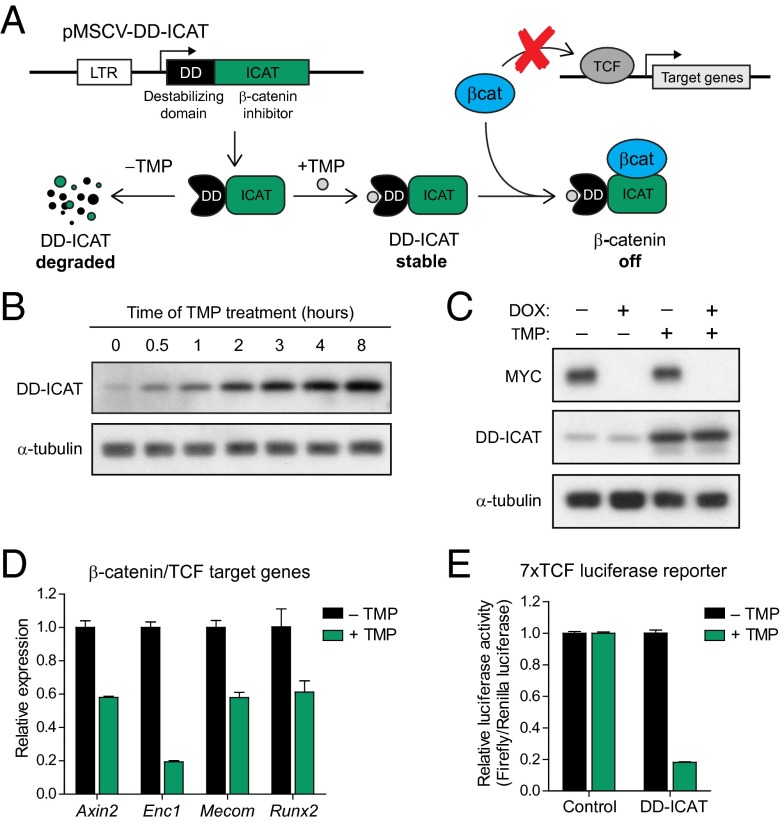Fig. 3.
Inducible inhibition of β-catenin through a chemical-genetic approach. (A) Schematic outlining the inducible DD-ICAT β-catenin inhibitor consisting of a degradation domain (DD) and the β-catenin inhibitor ICAT. DD-ICAT is constitutively degraded and becomes stabilized in the presence of the ligand TMP. Once stabilized, DD-ICAT prevents the interaction between β-catenin and TCF and effectively inhibits β-catenin transcriptional activity. (B) Western blot analysis of MYC lymphoma cells expressing DD-ICAT and treated with TMP for 0–8 h. (C) Western blot analysis of MYC lymphoma cells expressing DD-ICAT treated with either DOX alone, TMP alone, or both DOX and TMP. (D) Relative expression of β-catenin target genes Axin2, Enc1, Mecom/Evi1, and Runx2 in MYC lymphoma cells expressing DD-ICAT and treated with either DMSO or TMP for 2 d. (E) Quantification of luciferase signals in MYC lymphoma cells infected with a 7× TCF binding site luciferase reporter and DD-ICAT, treated with either DMSO or TMP for 24 h. Values are means ± SD of normalized firefly/renilla luciferase ratios from three independent experiments.

